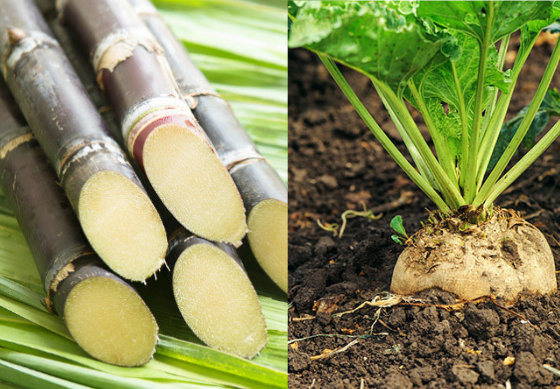Discover the Uses and Conveniences of Beet Sugar Vs Cane Sugar in Your Daily Diet Plan
Exploring the unique high qualities of beet and cane sugar exposes even more than just their sweetening abilities; it highlights their special influences on wellness and cooking arts. Beet sugar, known for its refined flavor, is usually favored in delicate treats, whereas cane sugar, with its hint of molasses, includes splendor to robust dishes. Each type holds its own dietary account and glycemic ramifications, welcoming a deeper understanding of their duties in a well balanced diet regimen and sustainable consumption methods.
Beginning and Production Procedures of Beet and Cane Sugar
The unique environments and dirt types needed for growing sugar beetroots and sugarcane contribute to differences in their growing techniques and geographical circulation, affecting the business economics and sustainability of their manufacturing. beet sugar vs cane sugar.
Nutritional Contrast In Between Beet Sugar and Cane Sugar
In spite of originating from different plants, beet sugar and cane sugar are nutritionally very similar, both largely including sucrose. Each supplies concerning 4 calories per gram, translating to about 16 calories per teaspoon. Structurally, both sugars are composed of roughly 99.95% sucrose, with very little amounts of other compounds like moisture and trace element, which do not dramatically modify their dietary profiles.

Inevitably, when selecting between beet sugar and cane sugar based on dietary material alone, both deal the same benefits and downsides as they are essentially forms of the same molecule-- sucrose, providing quick energy without other nutrients.
Influence On Wellness: Glycemic Index and Caloric Content
Exploring better right into the results of beet sugar and cane sugar on health and wellness, it is crucial to consider their glycemic index and calorie web content. The glycemic index (GI) of both beet and cane sugar is around 65, classifying them as high-GI foods, which can trigger quick spikes in blood glucose levels.
Each sort of sugar consists of around 4 calories per gram, making their caloric web content matching. For those monitoring caloric consumption, particularly when handling weight or metabolic health conditions, recognizing this equivalence is crucial (beet sugar vs cane sugar). Excessive usage of any high-calorie, high-GI food can contribute to health concerns such as obesity, heart illness, and insulin resistance.
Environmental and Economic Considerations of Sugar Manufacturing
Beyond wellness impacts, the production of beet and cane sugar additionally increases considerable ecological and economic concerns. Sugar beet growing often tends to call for cooler useful source environments and has a reduced geographical impact compared to sugar cane, which grows in tropical regions. Nonetheless, both crops are intensive in terms of water usage and land line of work, possibly bring about logging and water deficiency. Financially, the international sugar market is very volatile, influenced by changes in international profession policies and subsidies. Lots of nations incentivize sugar manufacturing via monetary support, skewing market value and influencing small farmers adversely.
Additionally, using pesticides and plant foods in both beet and cane sugar farming can bring about dirt deterioration and contamination, additional impacting biodiversity and local water bodies (beet sugar vs cane sugar). The choice in between growing sugar beet or cane typically rests on regional environmental conditions and financial factors, making the sustainability of sugar manufacturing a complex concern
Culinary Applications and Flavor Differences
While the environmental and financial elements of sugar production are without a doubt considerable, the choice in between beet and cane sugar likewise influences culinary applications and taste accounts. Beet sugar, derived from the sugar beet plant, is recognized for Read Full Article its incredibly neutral preference.
Walking cane sugar, drawn out from sugarcane, frequently retains molasses traces, which give a distinctive splendor and depth. The small variant in dampness material in between beet and cane sugar can impact the texture and consistency of recipes, making cane sugar a recommended option for particular dishes that benefit from its one-of-a-kind homes.

Final Thought
Finally, both beet and cane sugar have distinct origins and manufacturing processes, using comparable nutritional profiles with mild distinctions in sodium material and flavor. While their influence on wellness, especially regarding glycemic index and calories, is similar, the option between Full Article them frequently comes down to ecological, financial aspects, and certain culinary needs. Comprehending these elements can direct consumers in making informed decisions that align with their health goals and flavor choices.